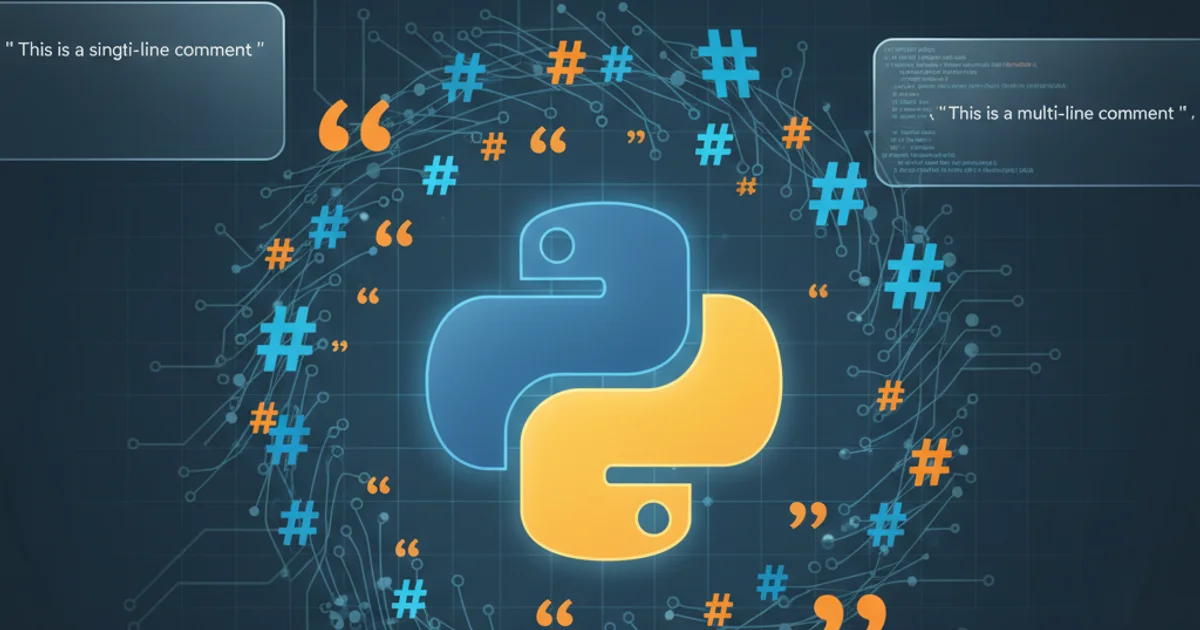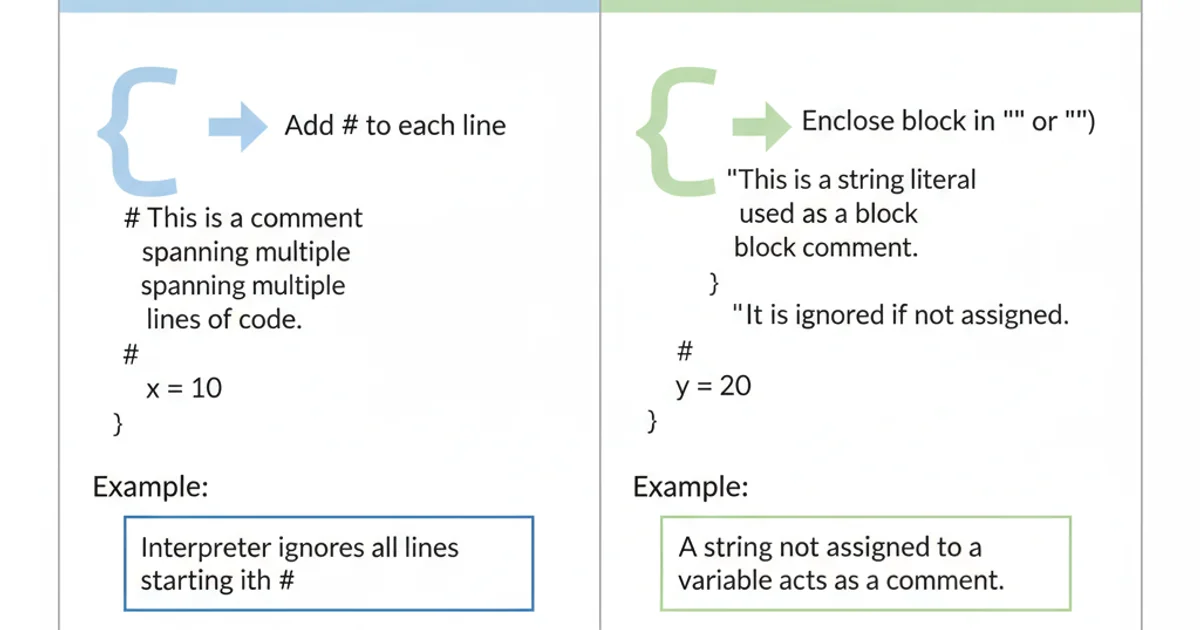How to comment out a block of code in Python
Categories:
Mastering Code Comments in Python: A Comprehensive Guide

Learn the various techniques to comment out blocks of code in Python, from single-line comments to multi-line docstrings, and understand their best use cases.
Commenting code is a fundamental practice for any developer. It enhances readability, explains complex logic, and helps in debugging. In Python, there are several ways to comment out blocks of code, each with its specific purpose and convention. This article will guide you through the different methods, including single-line comments, multi-line string literals (often used as docstrings), and temporary block commenting techniques.
Understanding Python's Commenting Mechanisms
Python primarily uses the hash symbol (#) for single-line comments. For multi-line comments, Python doesn't have a dedicated syntax like some other languages. Instead, multi-line string literals (triple quotes) are conventionally used, especially for docstrings. Understanding when to use each method is key to writing clean and maintainable Python code.
# This is a single-line comment
print("Hello, World!") # This comment explains the print statement
def my_function():
"""This is a docstring for my_function.
It explains what the function does and its parameters.
"""
pass
Examples of single-line comments and a multi-line docstring.
Method 1: Using Single-Line Comments for Blocks
The most straightforward way to comment out a block of code is to prepend each line with a hash symbol (#). This is ideal for temporarily disabling a few lines or providing explanations for consecutive lines of code. Most modern IDEs and text editors offer shortcuts to comment/uncomment selected blocks of code, making this method very efficient.
x = 10
y = 20
# z = x + y
# print(z)
# This block calculates the area of a rectangle
# length = 5
# width = 3
# area = length * width
# print(f"The area is: {area}")
Commenting out multiple lines using individual hash symbols.
flowchart TD
A[Start] --> B{Select Code Block?}
B -->|Yes| C[Use IDE Shortcut (e.g., Ctrl+/)]
B -->|No| D[Manually Add '#' to Each Line]
C --> E[Block Commented]
D --> E
E --> F[End]Process for commenting out a block of code using single-line comments.
Method 2: Multi-Line String Literals (Docstrings) as Block Comments
Python does not have a dedicated multi-line comment syntax. However, multi-line string literals (enclosed in triple single quotes '''...''' or triple double quotes """...""") can be used effectively as block comments. When these strings are not assigned to a variable or used as a docstring (i.e., the first statement in a module, function, class, or method), the Python interpreter simply ignores them. This makes them a popular choice for commenting out larger sections of code temporarily.
'''
This entire block of code will be ignored by the interpreter.
It's useful for temporarily disabling a large section of code
during development or debugging.
# You can even include single-line comments inside this block.
print("This line is commented out.")
result = 10 * 5
'''
print("This line will execute.")
Using a multi-line string literal to comment out a block of code.
__doc__. If placed elsewhere, they are simply ignored. Ensure your intent is clear to avoid confusion.Choosing the Right Method
The choice between using multiple single-line comments and a multi-line string literal depends on the context and your preference. For short, temporary disabling of code or line-by-line explanations, single-line comments are often clearer. For larger blocks of code that you want to temporarily remove from execution, multi-line strings offer a cleaner visual approach. Docstrings, on the other hand, serve a different, more formal purpose of documenting code.

Comparison of commenting methods for blocks of code.